For a remote Alaskan island being made famous by the latest in reality show kitsch, this place is actually pretty easy to get to, all things considered.
Yes, the funky community of Port Protection—the subject the National Geographic Channel’s newest Alaska-based reality show depicting the challenging nature of daily life in the middle of a watery nowhere—rests at the northern tip of Prince of Wales Island and remains accessible only by boat or float plane, but you might be surprised just how easy life can be on the island’s sophisticated, if a bit rustic, road system.
Particularly if you’re a fly fisher, and especially if you can get your hands on a set of wheels for a few days.
Pavement is becoming increasingly common along the island’s main road system, which was constructed years ago, largely to service the timber industry which, truth be told, has done quite the number on the old-growth rainforest from one tip of the island to the other. While logging still happens (the U.S. Forest Service, despite promises to get out of the old-growth logging business, sold the Big Thorne timber lease in 2014, and cutting is under way as you read this), it’s not nearly at historic levels. What this means for anglers is a very well-maintained road network that crosses dozens upon dozens of salmon and trout streams that is accessible, even with a regular passenger car in many instances.
In short, if you can get to Prince of Wales, either via the Alaska Marine Highway System (“the ferry”) or a float plane, you can chase fish from May (steelhead) through September (trout, salmon and char).
More Like This
Earlier this summer, my daughter and I hung our hats at Alaska’s Boardwalk Lodge outside of Thorne Bay and drove a rented pickup all over the island in pursuit of Dolly Varden, sea-run cutthroat trout and late-arriving pink salmon. The lodge focuses largely on saltwater fishing for salmon, halibut and rockfish, but it does do some guided fly fishing on POW’s streams as well. Having the comfort and the meals of the lodge was really nice, but budget-minded anglers could likely get away without these perks (But why would you? The lodge employs top-notch chefs. Salmon ceviche and a bold cabernet likely beats the convenience-store grub you’d otherwise be forced to endure). The truck wasn’t a budget-breaker, either—we had the old blue-berry Tundra for the better part of four days, and it set us back less than $100 a day.
We put some miles on the pickup, traversing POW from south to north, dodging black bears and black-tailed deer along the road system. We fished famed rivers like the Thorne and the Klawock for sea-run cutthroats and humpies, and wandered down bear trails along unnamed streams, where we found beefy Dolly Varden eagerly awaiting the arrival of the late-running pinks.
Earlier in the year (April and May), POW is a fantastic place to chase southeast Alaska’s massive steelhead. By June, the chromers are back in the salt, but sea-run cutthroats are starting to hang out in the rivers and streams of the island. Some streams on the island get a solid run of sockeye (Sarkar River, Red Creek and the Klawock, for instance) starting in early to mid-July, and then the pinks and chums start showing up, usually around mid-July, but this year, the humpies didn’t run in earnest until the first week of August. Silvers then make their run, usually starting to show up in mid-August and hanging around through September.

The island’s trout and char—sea-run cutties and a handful of small rainbows, as well as a very strong population of Dolly Varden—are in and out of the river systems all summer long, usually timing their upstream runs alongside the salmon. The largest run of the summer is easily the pink salmon run, and while the humpies are a ton of fun on a fly, the Dollies are, pound-for-pound, superior fighters.
Many of the island streams flow dark and deep beneath the canopy of the Southeast Alaska rainforest—perfect habitat for ambush predators like Dollies and cutthroats. When salmon are in the streams, it can be truly easy fishing for these opportunistic feeders using both streamers and pegged beads drifted below the migrating fish. When salmon are sparse, these fish are a bit tougher to catch, but the rewards are often greater.

We used weighted streamers tied in gaudy orange and pink on some intimate and remote water to coax truly big Dollies from the depths. Of all the fish in Southeast, I think I prefer Dollies, simply because they’re so ravenous … so angry. Nearly every deep pool we fished on POW held these gorgeous char that simply would not allow a weighted streamer to escape from deep water to shallow water. And on a 5-weight (one could go lighter, in some instances, but this seemed to be just about right), they are plenty sporty.
Couple the aggressive nature of the char with the backdrop—think a chillier version of Jurassic Park—and you’ll find that you’re in fly fishing heaven chasing big fish in sometimes small water, often being watched by bald eagles and curious but timid black bears (there are no brown bears on Prince of Wales).

The island is the third-largest in the United States behind Kodiak Island and the big island of Hawaii, but don’t look at that as a deterrent. Rather, consider the nearly endless opportunities a giant, water-locked landmass like this offers. An angler could, in all seriousness, fish a different river, stream or lake every day for a year and likely find new water accessible via the road system or a short hike each time out. It might be Alaska’s best-kept fly fishing secret.
But, of course, the trick is getting there, and finding the means of transport once you arrive. We took the ferry from Ketchikan (an Alaska Airlines stop) to Hollis and then rented the truck from Hollis Adventure Rentals. The vehicle was clean and dependable, especially considering the beating it likely takes each summer as it’s driven indiscriminately over washboards, down two-track lanes into the rainforest and along gravel roads that circumvent the whole island.
Do-it-yourself fly fishing in Alaska can be tricky from a logistical standpoint, but with proper planning and a little luck, chasing salmon, trout and char on Prince of Wales isn’t that tough at all.
If you go
When: Steelhead run in modest numbers (the fish can be massive) into a handful of Prince of Wales rivers and streams starting in March and can be caught through May. Weather this time of year (or any time of year, frankly) can be a bit on the chilly side, with rain and snow likely. Chromers are a tough do-it-yourself target because they don’t run into every stream, and it could take quite a bit of time to figure out where they are. For steelhead, get a guide to get you started. Sockeyes start showing up in late June and into July, followed by pinks and chums later in the month and through August. Cohos, or silver salmon, are the last to make the trip to into the freshwater rivers and streams—they start showing up as early as mid-August. Sea-run cutthroat trout, rainbow trout and Dolly Varden are in and out of the fresh over the course of the summer, usually following salmon upstream.
Where to stay: We stayed at Alaska’s Boardwalk Lodge, and I recommend it, not only for the convenience of its location (just about the middle of the island), but for its fantastic food and its gorgeous backdrop near Thorne Bay. But the island is home to a number of rental cabins, either privately or through the U.S. Forest Service. Motels and RV parks are also available in the communities of Hollis, Craig, Thorne Bay, Klawock, Naukati and Whale Pass. Do some research. Plan ahead. You’ll be pleasantly surprised.
Getting around: We rented a truck from Hollis Adventure Rentals and had a good experience doing so. There are other options, of course, so do some homework. Just don’t expect your typical Hertz fleet vehicle—you’ll be on gravel roads (albeit surprisingly good ones) much of the time, so be prepared for pickups and SUVs with a bit of a rattle. You’ll be able to use your own car insurance (we weren’t given any other option) so remember that you’ll be on the hook for damage other than normal wear and tear.
How to get there: POW can be reached by float plane from Petersburg, Ketchikan or Wrangell, or via the ferry from Ketchikan. All three of the above-mentioned communities are stops on the Alaska Airlines route map. A float plane is a sweet ride, but, per person, the ferry is cheaper—and it’s a gorgeous three-hour ride across the Inside Passage to the Hollis Ferry Terminal.




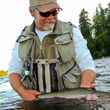

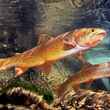





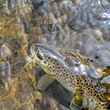



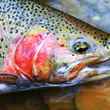



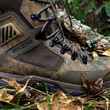
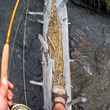



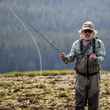


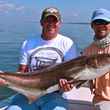
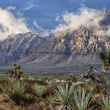
Comments
Flip replied on Permalink
POW has been one of my "drop out of life with rod in hand" fantasy places.
Chris replied on Permalink
You could totally do it. Road system. Bars. Fish. What else is there?
Mo Trout Hunter replied on Permalink
Great article, but one correction: there is an early (summer) coho run in a handful rivers that starts as early as late June, extending into mid-August. As it winds down, the late (fall) run begins, so there's usually only a brief lull in the action. With the number of pinks in the rivers at that time, you won't have a chance to get bored!
Troy sharp replied on Permalink
I know that rock! Biggest dolly I've seen in southeast came out of that hole. Looks like you had some high water.
Pages